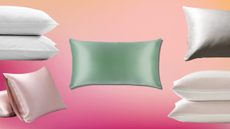Officially 2023's big decor trend, transitional-style kitchens are so uplifting to live in. Here's how to style one
Master the look that's sweeping across the interior design world with this expert advice on transitional-style kitchens

It’s easy to see why transitional-style kitchens are so popular right now. By combining vintage and contemporary aesthetics, transitional spaces flit between eras. And, being so carefree and seemingly not bound by any design rules they end up feeling relaxed, fresh and highly personal.
When done correctly, bringing old and new together can give a room enduring appeal. “Transitional style is about using the clean, crisp elements of a traditional style and adding more modern elements that freshen the look and keep it timeless,” says Mariana Ugarte, Director and Co-Founder of interior design firm Interior Fox.
Charlie Smallbone, founder of Ledbury Studio, agrees. “Transitional design is the marriage between traditional artisan joinery methods and cutting-edge modern design,” he says. “Traditional design details, like Georgian style cockbead, interposed with contemporary engineered details, such as minimal aged brass or wooden frames, give the furniture a contemporary but classic look. One that is timeless yet nonetheless bang up to date.”
But while it might be easy to imagine layering furniture from different eras in a transitional style living room or transitional style bedroom, creating a transitional style kitchen is more of a challenge. With the need to include often domineering modern appliances, and with fewer opportunities for decoration and soft furnishings, transitional style kitchens require careful thought. Follow these expert tips to achieve the look - and make it feel effortless - in your own space.
10 TRANSITIONAL STYLE KITCHENs and how to create one
1. Combine fitted cupboards with freestanding furniture

First things first, make sure fitted modern kitchen units don’t dominate the room and that there’s space for character to come through elsewhere.
“Use vintage pieces intermingled with functional and beautiful kitchen cupboards,” says deVOL Creative Director Helen Parker. “We have been huge fans of an eclectic, freestanding kitchen since the beginnings of deVOL, using pieces of furniture rather than runs of fitted cupboards. It’s a simple way of making your kitchen feel more of an extension of the rest of the house rather than a completely different look.”
If you’re stuck deciding what style of kitchen cupboards to choose, shaker-style are a good halfway house between the traditional and contemporary. “Shaker-style kitchens will work—and there are thinner, more modern shaker-style cabinets which would help to achieve this look too,” says Mariana Ugarte at Interior Fox.
2. Go for marble worktops
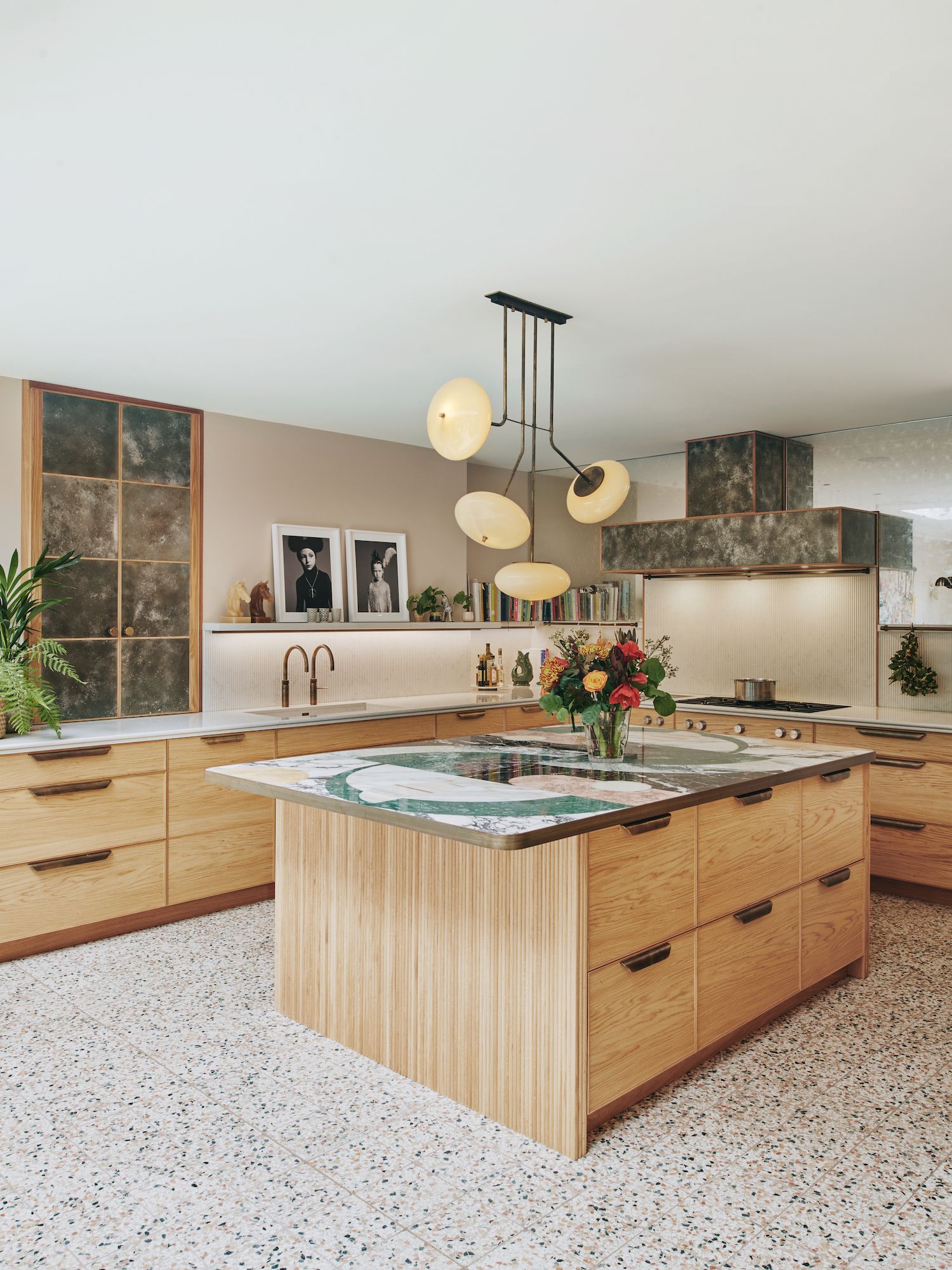
Marble might be at the pricier end of your kitchen countertop options, but when it comes to achieving a transitional look, it could be well worth the investment. “A defining characteristic of the transitional kitchen is marble worktops, which I regularly incorporate into my designs,” says Ledbury Studio’s Charlie Smallbone.
“Over time, the marble develops a personality and patina that reflects its long life in the kitchen, which adds real depth to the overall design,” he says. “A contemporary take on traditional marble is featured in this kitchen project designed by Lara Bohinc of Bohinc Studio. She wanted to use a selection of Italian marbles—in shades that elegantly complement the muted colors throughout the rest of the kitchen— and that are inlaid into an aged-brass edge trim. The effect is truly unique and very personal to the couple who live there.”
3. Use a mix of muted tones
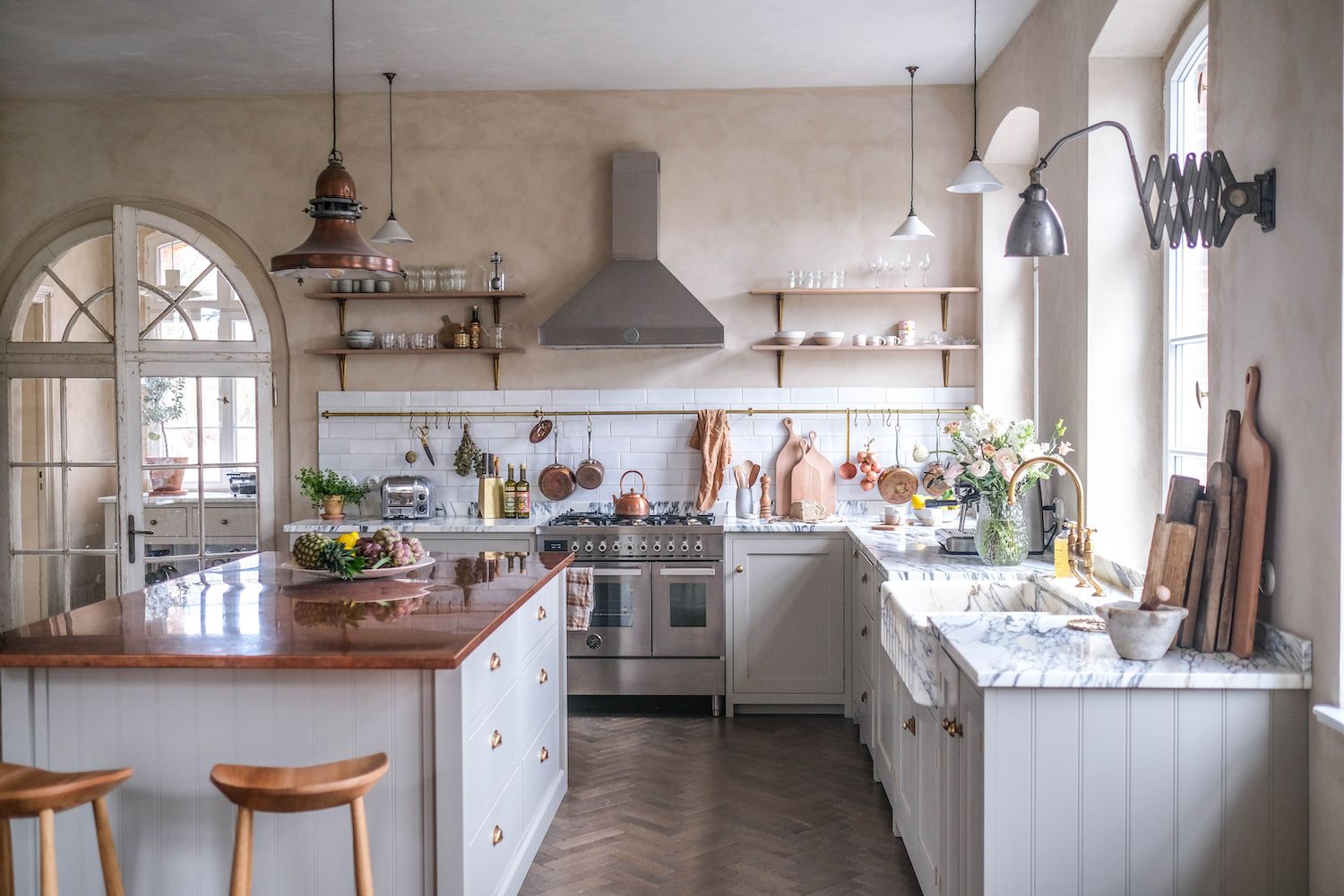
When it comes to color for any transitional style room, muted or neutral tones are key for creating balance. “Deep, muted colors for cabinets and white marble/quartz countertops, are perfect for achieving this look,” says Mariana Ugarte of Interior Fox.
But while cream kitchens are soothing, using more than one color can also help harmonize the space. “We have never favored sleek, matching, contemporary soulless rooms—we like beautifully painted cupboards, in a mixture of colors,” says Helen Parker at deVOL.
4. Create texture with tiles
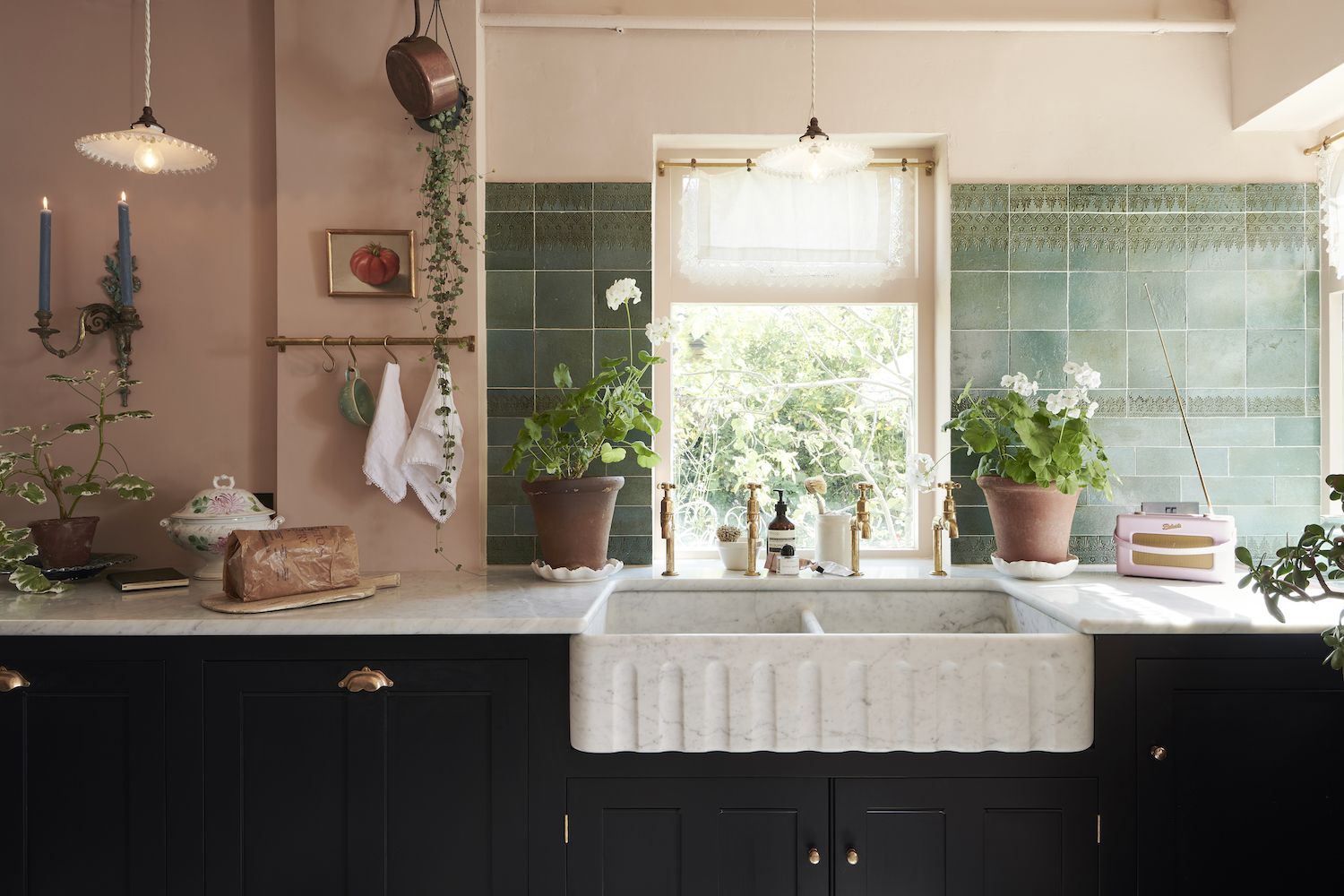
Layering different textures is absolutely key when it comes to marrying old and new styles together. “The sleek, clean-cut lines of a contemporary kitchen can feel cold and impersonal,” says Charlie Smallbone. “By layering in rich texture, you create a kitchen that’s bursting with warmth and character. Think carved natural timber, exquisite veneers with metal inlays, antiqued glass—the list goes on! The result is a truly unique kitchen design that is tailored to the tastes and personality of the person living there.”
Tiles can be a brilliant way of adding texture to a pre-existing kitchen. “If you go for flat kitchen cabinets or move into a newly renovated kitchen that's more modern, you can add off-white zellige tiles to the backsplash,” says Mariana Ugarte. “The texture will help it from not appearing too cold and sterile.”
5. Build texture through layered lighting
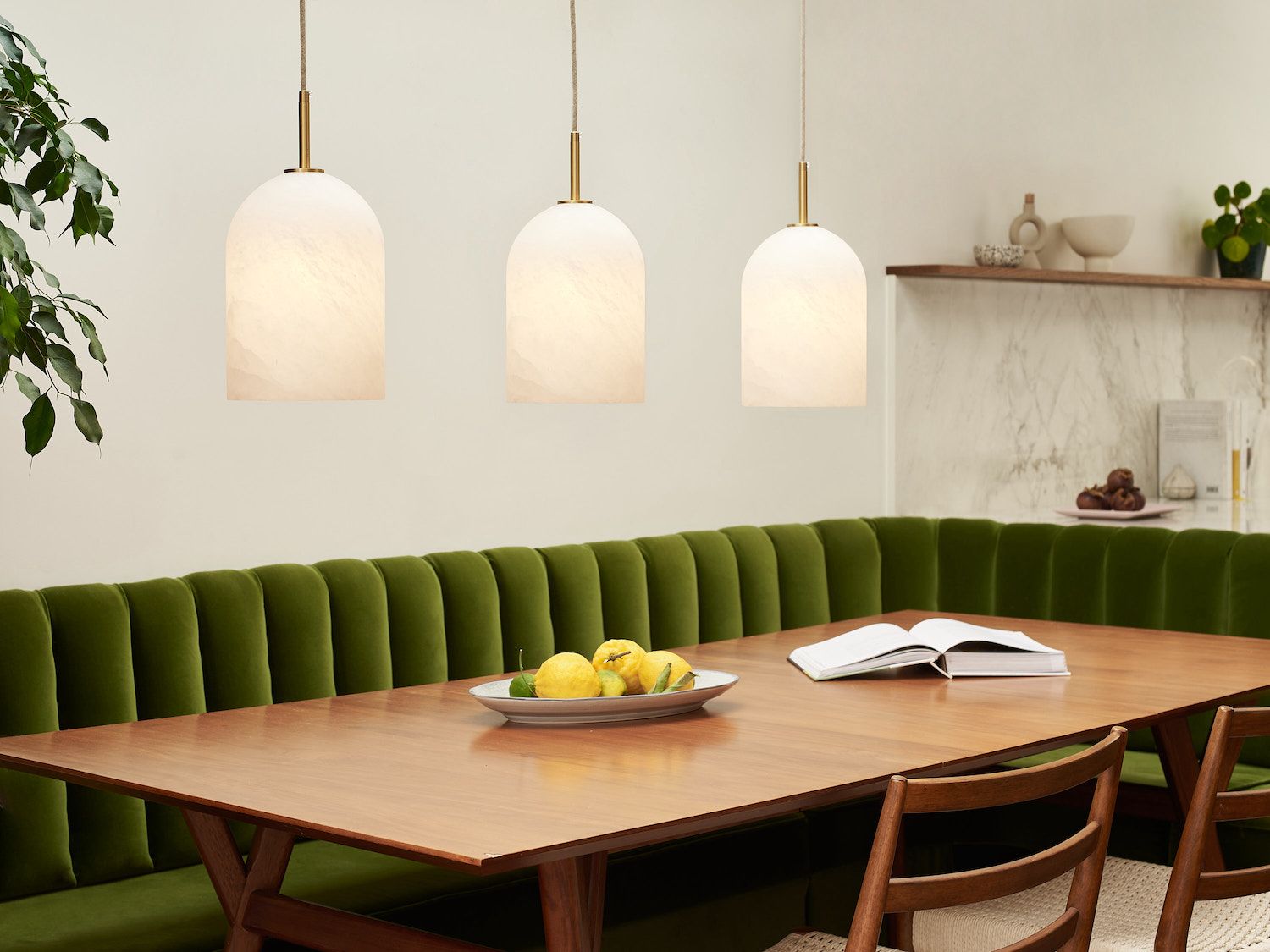
Layered kitchen lighting can also add texture to a room. It makes spaces more adaptable, which is especially important for kitchens, where cooking, entertaining and increasingly working can happen. “A dining table should always be the starting point for ambient lighting—your primary source of light,” says Hanna Walter, Product & Creative Manager, Heathfield & Co. “If you decide to boost ambient light levels with downlights, don’t create a grid across the ceiling. This will create a bland wash of light. Rather, consider where you need the light most.”
Add another layer with task lighting, which could include dimmable lights above your worktops or kitchen island, or in an open plan space that is also a transitional-style dining room. “An island is a chance to add a decorative touch too—to offset the practical lighting that can dominate a kitchen—so choose a pendant (or series of pendants) that will make a statement and draw attention to the centerpiece of your kitchen! Top tip: if you’re installing a row of pendants, an odd number of pendants is more pleasing to the eye than an even number.”
As we've seen in transitional-style bedrooms, a key further layer is accent lighting. “This draws attention to specific features in your kitchen,” says Hanna Walter. “For example, if you have niches built into your island unit, make sure you light them so that at night, you can switch off the general lights and dine in their soft glow. Alternatively, you may wish to illuminate favorite artworks or original architectural features.”
6. Incorporate metal accents
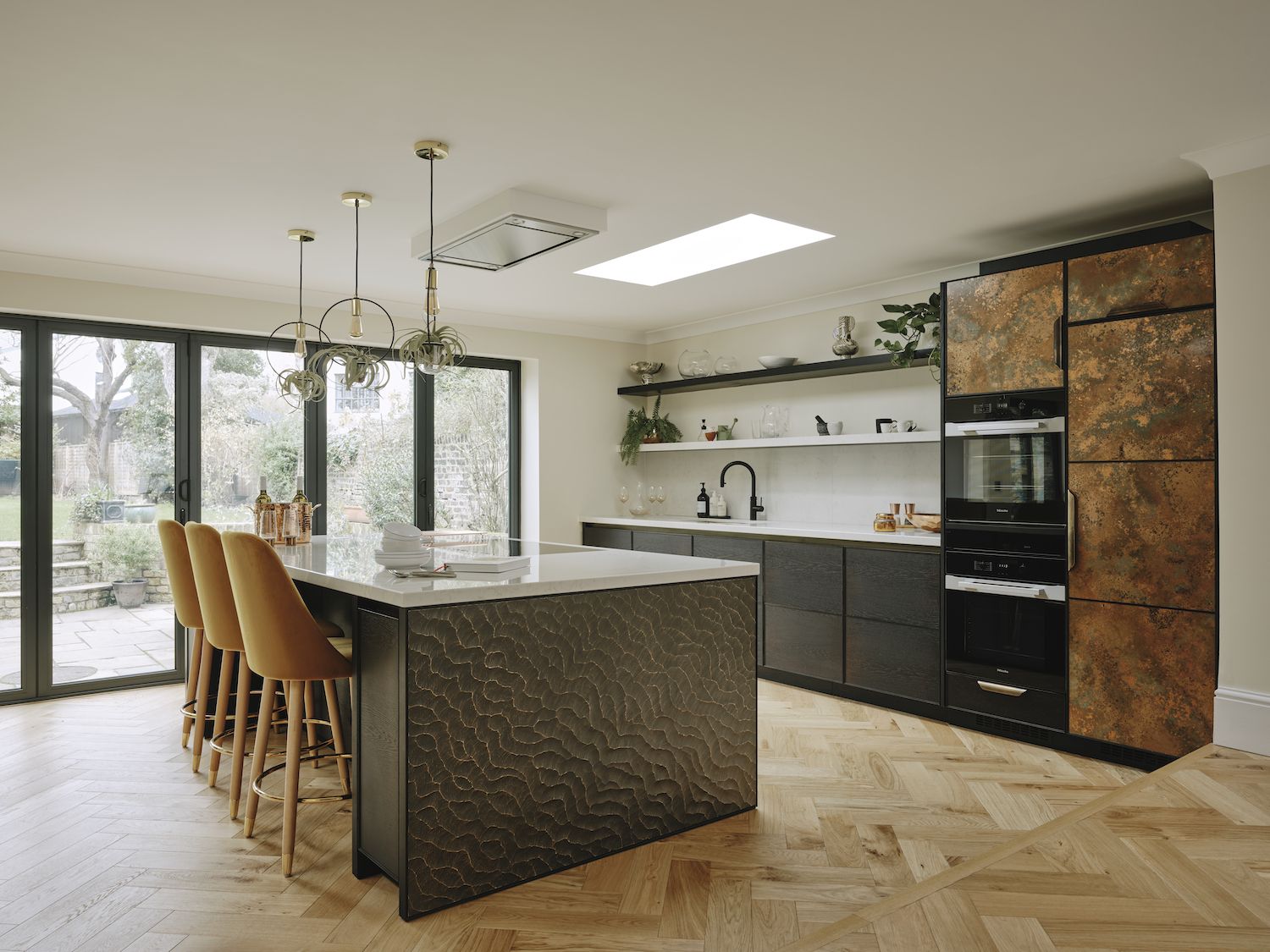
Metal is a hugely versatile material, and can add real depth and character to a kitchen when used in unexpected ways. “Because of the warm, tactile quality of metals, they have long been used in the kitchen, albeit for smaller elements like brassware,” says Charlie Smallbone.
One of the kitchen trends we're seeing a lot coming through right now is for mixed metals - chromes and golds, darks and warms - which feels like a move away from the dogma of having all one color. The result is a space that encapsulates eclectic style and delights the eye.
7. Apply traditional crafts in news ways
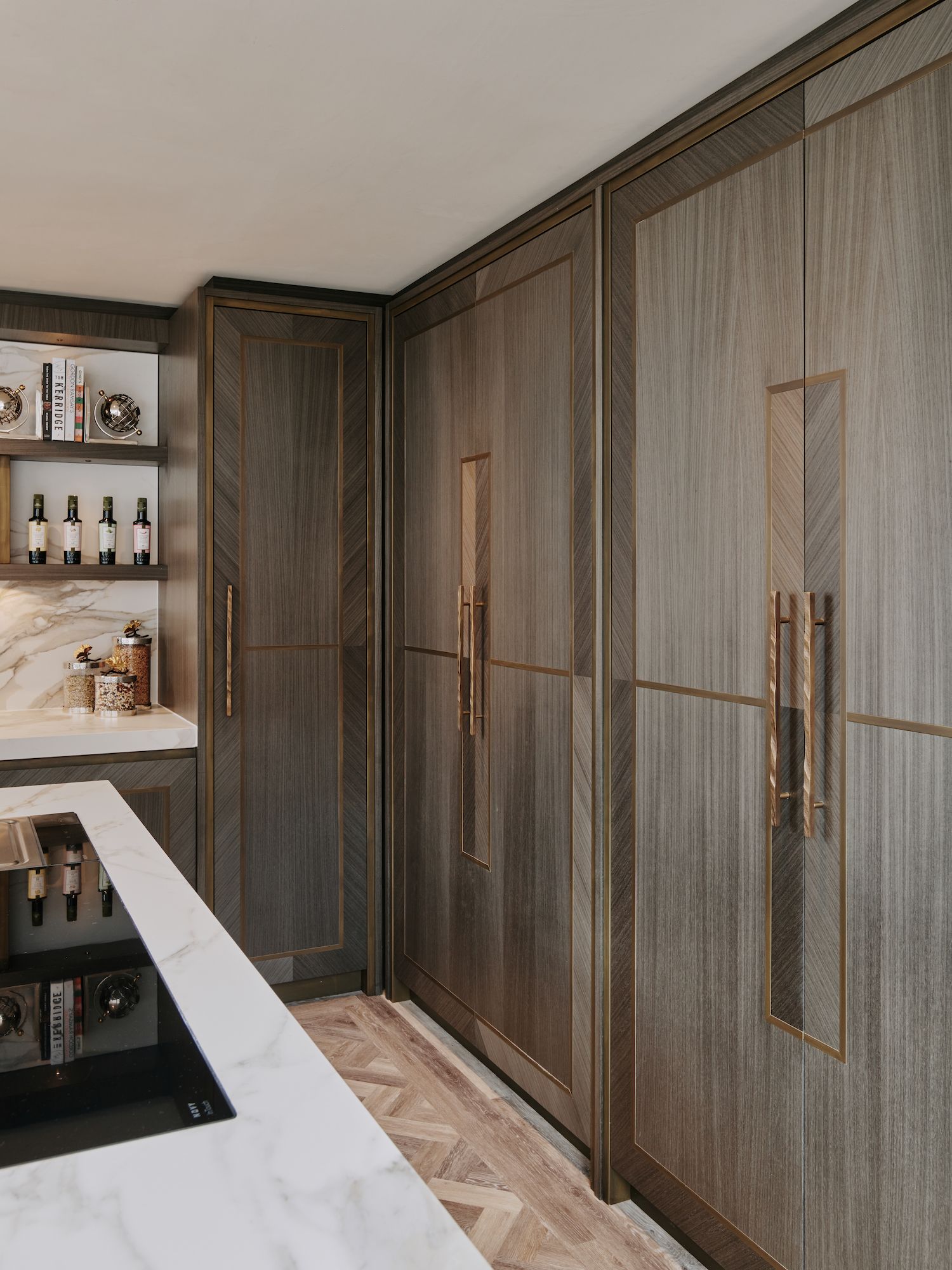
Look out for modern applications of traditional crafts when designing a transitional-style kitchen space, like a contemporary rug or basket that uses traditional weaving techniques.
“Arguably one of the best examples of a transitional kitchen is our Marquetry Collection [pictured],” says Charlie Smallbone. “A contemporary adaptation of a technique that has been used on finely crafted furniture since the 15th century, the Marquetry Collection features cross-laid veneers applied by hand in an intricate marquetry design and accented with liquid metal inlays. The effect brings traditional marquetry up-to-date and is simply stunning!”
8. Make smaller, subtler statements
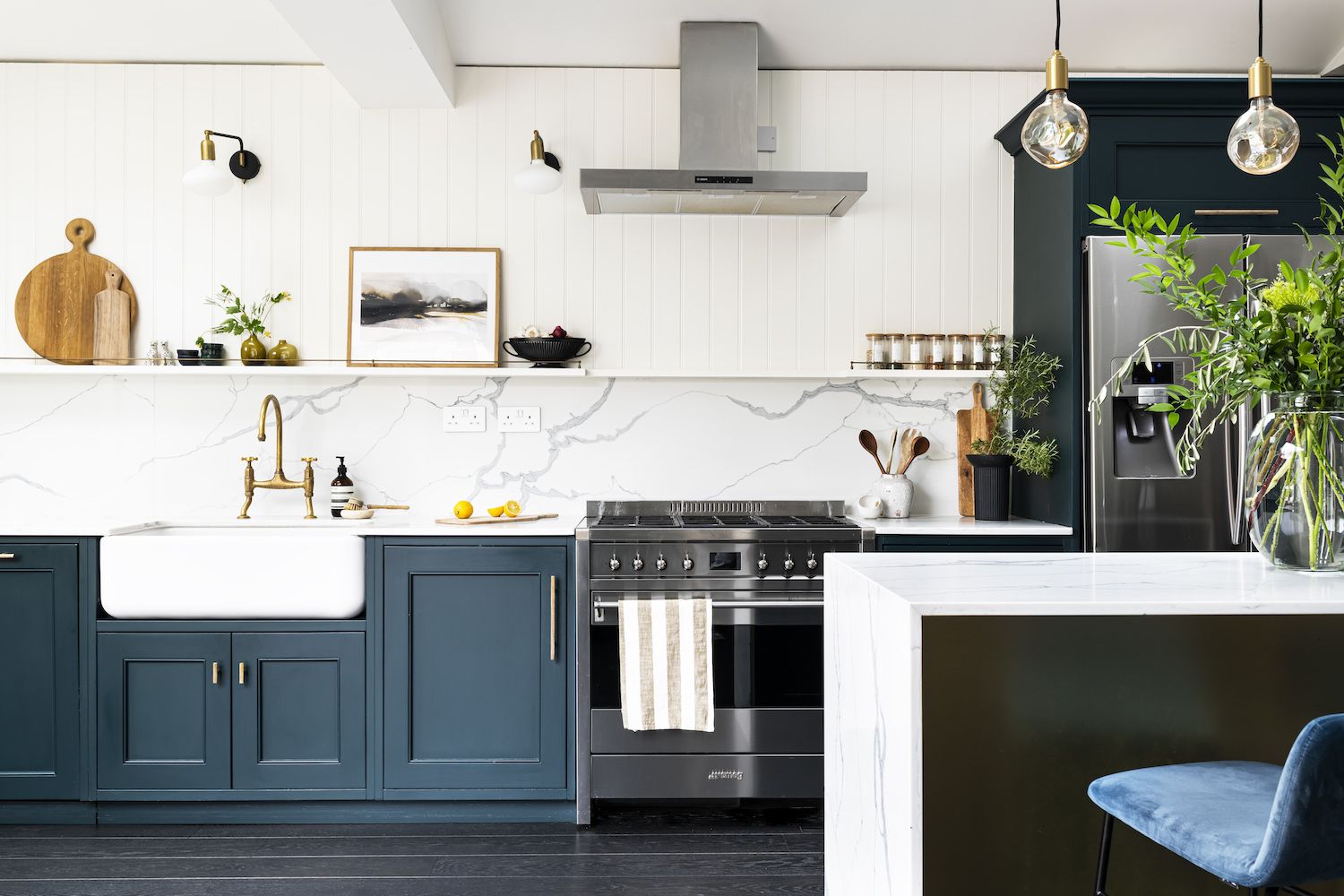
To create harmony in your transitional style kitchen, try to avoid bold furnishings. “Don't go for super large statement vintage pieces or statement modern pieces,” says Mariana Ugarte. “Try finding vintage coffee table interior design books, and smaller items that tell a story rather than consuming the space. It is almost the subtle eclectics that make you want to look around more and find things.”
At the same time, it’s a good idea to keep clutter to a minimum. “Keep the kitchen crisp and clean, not having too much clutter on open shelves and the countertop,” adds Mariana Ugarte.
9. Frame statement pieces with simple decor

If you do want to include a statement piece, you can maintain the room's balance by making sure the area around it is super simple. In the example above, the ornate chandelier is set off beautifully by the minimalist, modern worktop and taps of the kitchen island underneath.
As Studio Morton's Clare Morton puts it: "Take care, particularly when shopping for antiques and vintage pieces not to choose items that are too ornate. If there is a piece that you really want to include that is more ornate—make that a focal point by ensuring that the decor around it is very simple. Keep it simple, paired back and elegant."
10. Always shop for quality
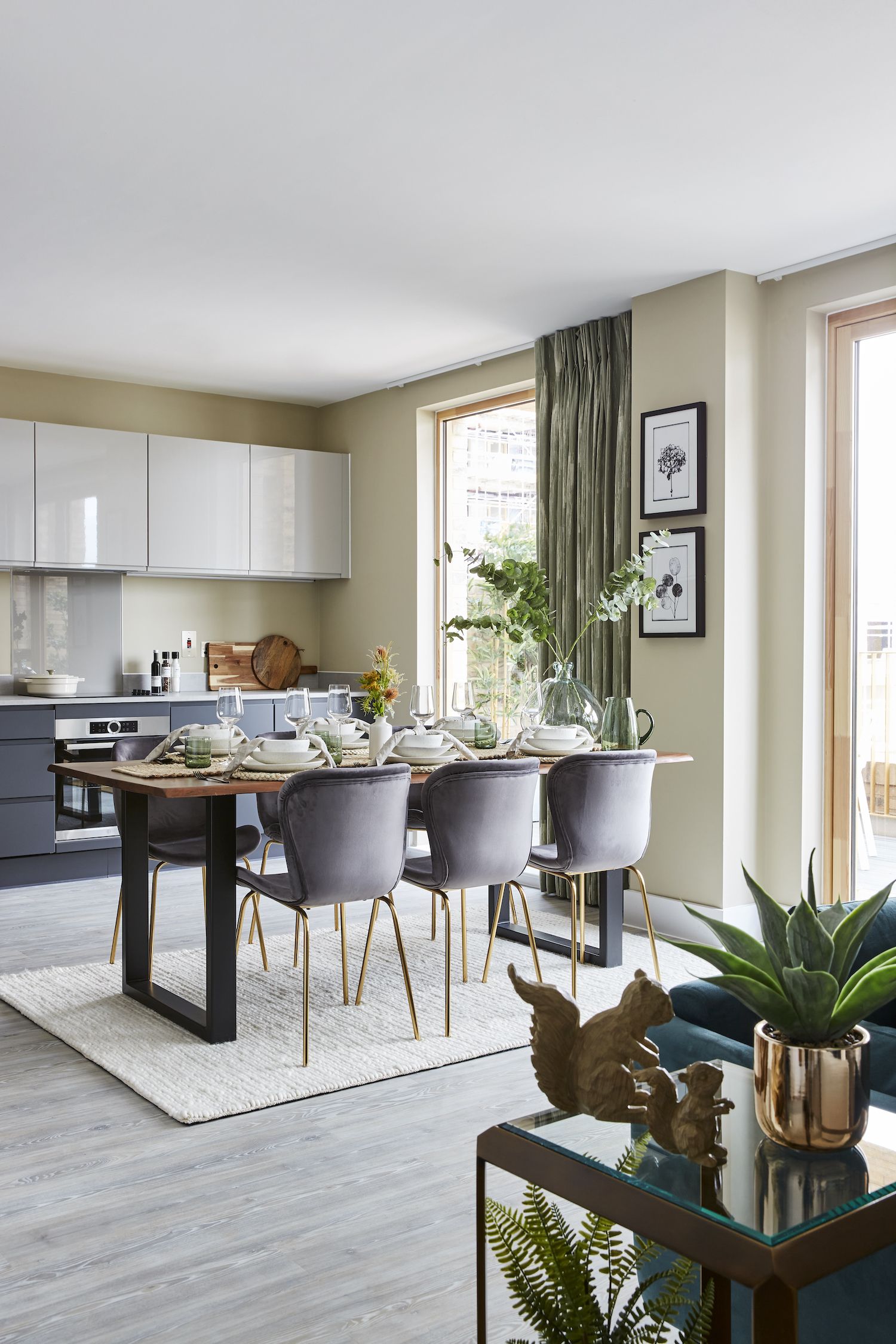
The beauty of transitional style design is marrying contrasting objects together—but they should never contrast in terms of quality. "Older pieces are often of a higher quality than modern pieces," says Clare Morton. "Ensure that the modern items chosen are also of a high quality in order to maintain a superior aesthetic throughout the room. Putting cheap looking new pieces next to older, well-made pieces will make them look cheaper still. You don’t need to break the bank, but choose your items carefully."
Be The First To Know
The Livingetc newsletter is your shortcut to the now and the next in home design. Subscribe today to receive a stunning free 200-page book of the best homes from around the world.
Kate Hollowood is a freelance journalist who writes about a range of topics for Marie Claire UK, from current affairs to features on health, careers and relationships. She is a regular contributor to Livingetc, specializing in reporting on American designers and global interiors trends. Based in London, Kate has also written for titles like the i paper, Refinery29, Cosmopolitan and It’s Nice That.
-
 5 Things You Should Never Store in Your Shed, According to Experts
5 Things You Should Never Store in Your Shed, According to ExpertsIt's crucial to be mindful about the objects you choose to store outdoor spaces
By Katie Baxter Published
-
 What are the Most Comfortable Pillowcases? From Temperature Regulating to the Best for Your Skin
What are the Most Comfortable Pillowcases? From Temperature Regulating to the Best for Your SkinWhen you're looking for comfort in your pillowcases, material matters. These are the best you can buy
By Faaizah Shah Published

